Barbarossa 1941 – USSR Invaded 75th Anniversary Series [Part 1]
June 20, 2016 by crew
June 22th, 2016 marks the 75th anniversary of one of the largest military assaults ever undertaken in the history of man. This was Operation Barbarossa, the invasion of the Soviet Union by Nazi Germany on June 22, 1941. This article series will make a feeble attempt to put a commemorative wargaming perspective on this gigantic clash.
In all, three million Germans and one million Axis allies hit six million Soviet soldiers in an offensive that started the largest … and worst … war there has simply ever been.
Catch The Series Overview Interview Above
If Germany was ever to truly win World War II, it would have to be here. As it turned out, this invasion would be the biggest single factor leading to the fall of the Third Reich.
Project Scope
The war in the Soviet Union would last almost four horrific years, probably the worst 1,417 days in human existence. Barbarossa, however, was only the first Axis push, lasting about three months. Then came Operation Typhoon, their final shove toward Moscow, followed by the first successful Soviet counterattacks against the invaders.
Together, these three initial phases lasted from June to December 1941, the six-month earthquake we’ll attempt to cover in this series. We’ll see Nazi Germany make (by far) her most titanic effort of conquest, while the Soviets suffer the most dire defeats in history. Yet somehow they survive, and thus ultimately decide World War II.
I’ll use two game systems to try and bring some of the most epic moments of this campaign to tabletop. First, we’ll recreate tactical engagements through Ironfist Publishing’s “Battlegroup” game system, specifically the Battlegroup: Barbarossa campaign supplement. I’ve recently published an article series on this system, which can be found HERE.
Secondly, I’ll use an updated edition of Avalon Hill’s classic “PanzerBlitz” system for some larger-scale “command tactical” games. The Eastern Front never did anything small, after all. Published in 1971, PanzerBlitz focused on the Eastern Front, and was one of the first systems to bring modular, tactical wargaming to the general public.
Background
From its very outset, Germany’s invasion of the Soviet Union would be a different kind of war. Yes, previous invasions had been swift and brutal. But Hitler’s plan was not to merely “conquer” the Soviets. They were to be annihilated, erased from the new industrial and agricultural heartland of an imagined Germanic Empire.
Standing against this assault by one of history’s most brutal dictatorships, we have ANOTHER of history’s most brutal dictatorships, Stalin’s Soviet Union. When the two most barbaric and powerful regimes on earth collide in a continent-scorching fight to the death, we get … quite simply … the most ferocious war humanity has ever seen.
So perhaps a gentle word of warning is in order. Depending on how deep you get into the historical background of your campaigns, when you wargame on the Eastern Front, you are going to a dark, dark place.
The Build-Up
For this invasion, the Germans had assembled the most powerful army yet deployed. Three million well-equipped, trained, and confident Wehrmacht and Waffen SS troops were backed up by eighteen panzer divisions and thousands of aircraft. Another million came from allies like Rumania, Bulgaria, Hungary, and even Finland.
The Soviets certainly had a huge force to oppose the invaders. No less than six million men stood ready. The Soviets had more tanks than all other armies on earth … combined (almost 24,000 in all). The Red Air Force was also massive. But of course numbers don’t tell the whole story.
Fearful that his own army could pose a threat to his position, Stalin had recently “purged” his officer corps, killing nearly all his senior commanders and tens of thousands of his field-grade officers. The Red Army in 1941 was a headless, incompetent, flailing giant … one needs only look at their attack on Finland (1939-40) for proof.
The Storm Breaks
At 03:15 on June 22, 1941 – thousands of German artillery pieces opened fire along a 1,080-mile front. Elite “Brandenburger 800” commandos blew up more command points, assisted by German-trained Lithuanian, Belarussian, and Ukrainian nationalists.
By 06:00 the sun was up and the Luftwaffe tore into the Red Air Force, mostly on the ground. Over 1,400 aircraft were destroyed on the first day. The commander of the main Soviet air fleet, Major-General Ivan Kopets, got in his plane to survey the damage on his airfields. When he landed, he calmly got out of his plane … and shot himself.
Meanwhile, NKVD border forces were slaughtered at key crossing points. Bridges were seized or hastily built by German engineers. Grenadiers poured over the border, liquidating resistance and opening vital road junctions. Finally, over 3,000 panzers rumbled off their jump points. Barbarossa was on.
The Soviet response was nothing short of chaos. Repeated warnings, including clear reports from British intelligence, had been ignored by Stalin and his yes-men. Less naive Red Army commanders had seen this coming, and had tried to get at least some preparations in place. Overall, however, the Soviets were caught completely by surprise.
Soviet units, those that got any orders at all, were simply told to counterattack. Such orders were a death sentence under the circumstances, but any commanders who refused were immediately shot. Stalin himself fell into a catatonic nervous breakdown and didn’t emerge from his bedroom for at least three days.
First Clash
Pruzana, Belarus - June 22, 1941
So let’s start at the beginning, with one of the very first tank engagements of the Eastern Front.
As discussed in the captions above, the central German army group was assigned two complete “panzergruppe.” One of these was Panzergruppe II under the incomparable General “Schnelle Heinz” (Fast Heinz) Guderian. This was a massive force of thirteen divisions (200,000+ men), including three motorized and five panzer divisions.
Leaping across the River Bug, Guderian’s central corps (XII Army Corps) locked horns with the old but formidable Soviet fortifications at Brest-Litovsk. Meanwhile, his three mechanized corps swept around the obstacle to the north and south, and pushed deep into enemy territory.
By the end of the first day, one of Guderian’s panzer divisions (the 18th Panzer, part of XLVII Motorized Corps on the left wing) had pushed 37 miles into what is today Belarus. The sun was just beginning to set when they finally ran into a significant Soviet tank force, the 30th Tank Division (14th Motorized Corps, 4th Army) at the village of Pruzana.
In addition to being one of first major tank actions on the Eastern Front, Pruzana is interesting because of some of the tanks involved. Among these were the “Trauchpanzer III” submersible tanks, initially designed to land on the shores of Sussex and Kent. These didn’t float like DD Shermans, but crawled along the bottom by using snorkels.
The 18th Panzer Division was also attached with Special Battalion 100 attached, equipped with the “Flamingo” flamethrower variant of the PzKpfw II. There was even a detachment of British A-13 cruiser tanks, captured during the Western Blitzkrieg the previous summer.
The Soviets also had large number of flamethrower tanks, namely the OT-133 and OT-26A. Such units were initially attached to many Soviet tank divisions, but their use in combat was mercifully brief. Flamethrowers are very short-ranged weapons, and these vehicles just didn’t have the armour to get that close to potential enemy targets.
Historically, Pruzana was a disaster for the Soviets, a theme we’ll see repeated over and again through the course of Barbarossa. Simply surviving will constitute a victory for the Soviet players, since this is more than the historical counterparts were usually able to do.
Boldin’s Counterattack
Grodno, Belarus - June 24, 1941
The Soviets were stunned by the scale and ferocity of the Axis assault. Technically, Germany and the Soviets were allies due to a nonaggression pact in which they’d divided the territory of conquered Poland two years before. Stalin had since refused to believe Hitler would attack him, and now his army was paying a horrific price for his gullibility.
Utterly unprepared, the Soviets lashed out blindly. Everywhere the order was the same: Attack. Despite German air supremacy, being cut off, having no fuel, no ammunition, no coordination with other units, and having no chance whatsoever against a clearly superior enemy … Attack, attack, attack, or be shot as a defeatist and a traitor.
One of the largest of these doomed counteroffensives was launched by General I. V. Boldin, deputy commander of the Soviet Western Front, on the third day of the war. Despite being cut off, he formed up a huge “shock group” of three corps (100,000 men) and launched a desperate strike against the German forces swiftly surrounding him.
This attack would be aimed at the southern flank of General Hoth’s Panzer Group III, currently bypassing Boldin to the north. In fact, Hoth was advancing so fast he was already passed Boldin’s spearhead, and the Soviet counter-strike instead hit the flank of German follow-up forces, namely the 256th Infantry Division (XX Corps, Ninth Army).
The Soviet counterattack was doomed from the start. One of their units, the 6th Cavalry Corps, saw 70% of its 36th Cavalry Division destroyed by “Stuka” dive-bombers in a single day. Tens of thousands were killed. But finally, the remnants of the 33rd Tank Division (11th Mechanized Corps) managed to find and hit the Germans on June 24.
The fighting was hard, despite the bedraggled state of the Soviet tank force. The German 256th Infantry was hardly one of the “star” panzer divisions, after all. Yet while the Stukas and panzers got all the glory, most of the victories won during Barbarossa were due to the foot-slogging infantry and the steady work of their towed artillery.
Despite German difficulties, however, the outcome was never in doubt. The defences held, and the surviving Soviets were eventually rounded up when they ran out of ammunition and fuel. Political officers and officers were shot out of hand, enlisted men were marched too prison camps from which few than 5% would ever return.
The German advance, meanwhile, continued unbroken, with spearheads soon driving toward Minsk, Kiev, Odessa, and through the Baltic states toward Leningrad. Stalin himself perhaps said it best. During those bleak opening days, he was heard to mutter: “Lenin founded the country, and we’ve ****ed it up.”
Come back next week as we continue our narrative on this gargantuan offensive. Some of the largest tank battles in history are about to unfold in the Ukraine, and the Soviets are about to sustain some of the worst defeats ever recorded … and survive. Add your comments and suggestions, and join the conversation on this epic campaign.
If you have an article that you’d like to write for Beasts Of War then you con get in contact with us at [email protected] to find out more!
"We’ll see Nazi Germany make (by far) her most titanic effort of conquest, while the Soviets suffer the most dire defeats in history. Yet somehow they survive, and thus ultimately decide World War II..."
Supported by (Turn Off)
Supported by (Turn Off)
"Utterly unprepared, the Soviets lashed out blindly. Everywhere the order was the same: Attack. [...] Attack, attack, attack, or be shot as a defeatist and a traitor..."
Supported by (Turn Off)



































![TerrainFest 2024! Build Terrain With OnTableTop & Win A £300 Prize [Extended!]](https://images.beastsofwar.com/2024/10/TerrainFEST-2024-Social-Media-Post-Square-225-127.jpg)





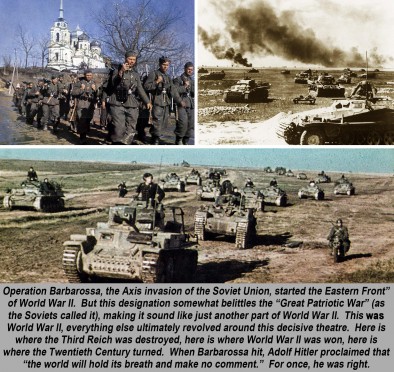
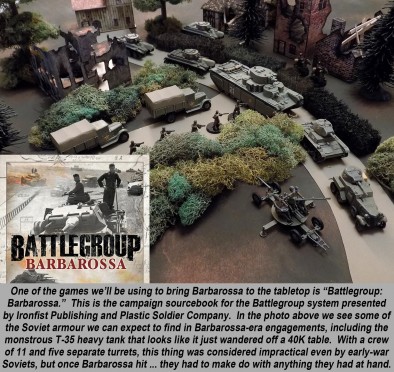
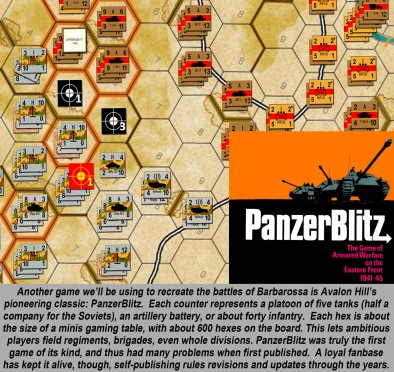
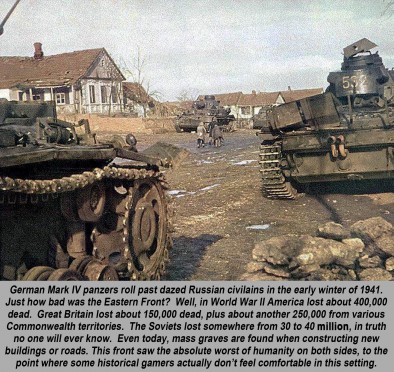

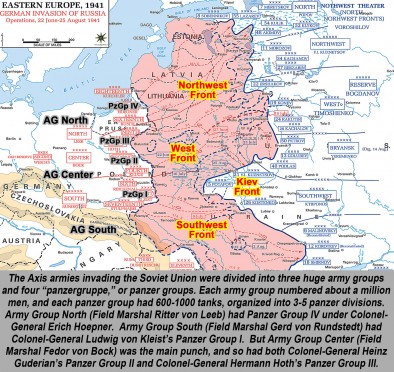
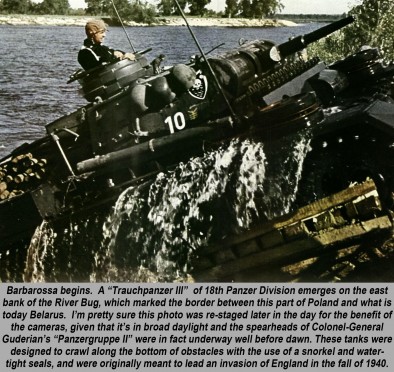
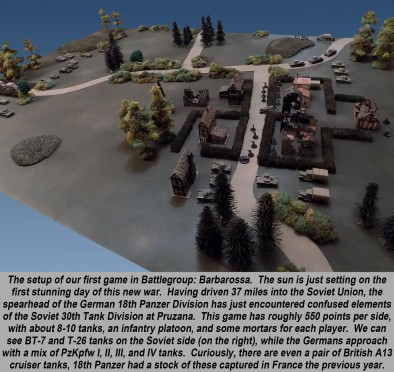
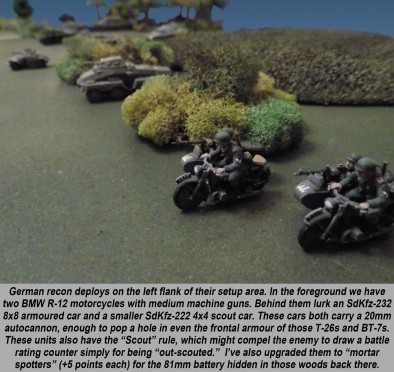
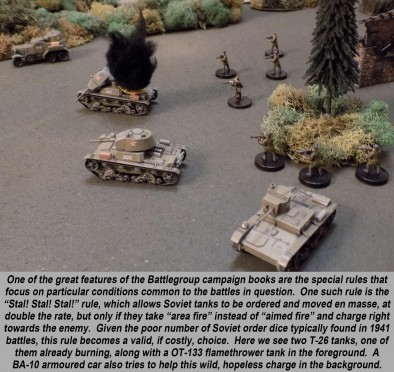
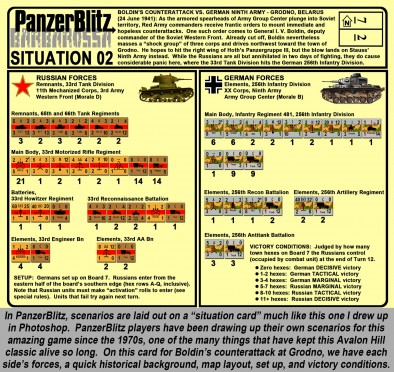
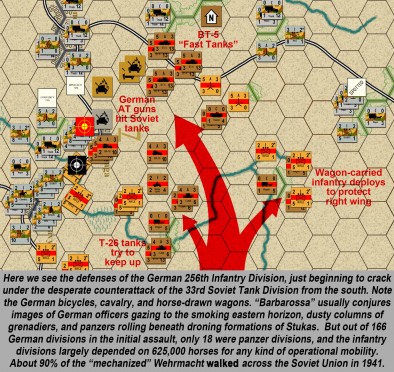
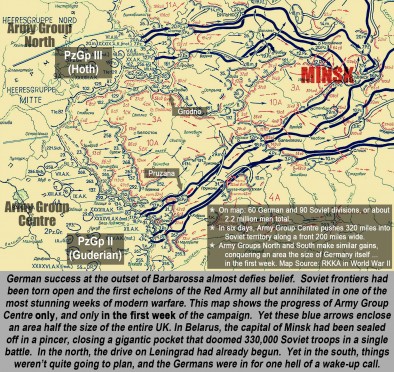


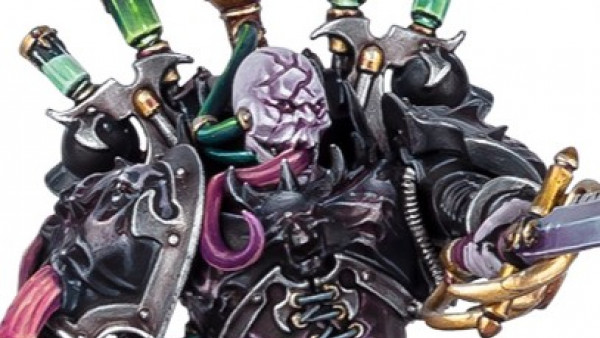
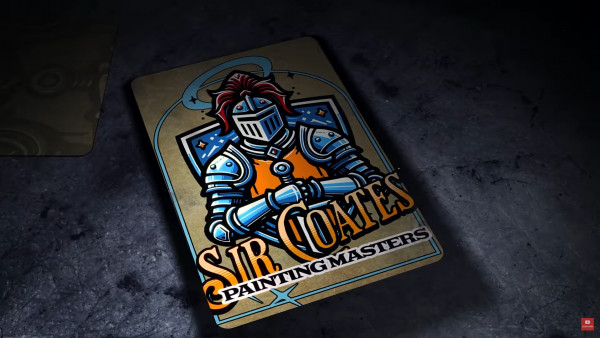
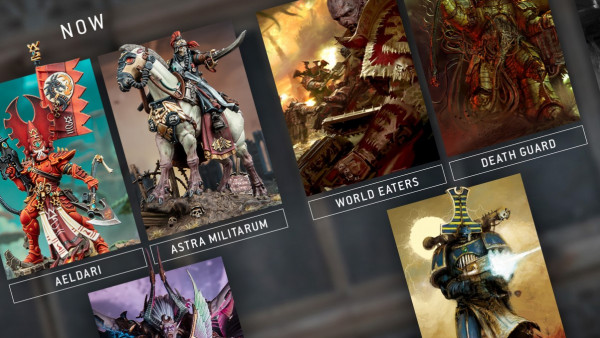

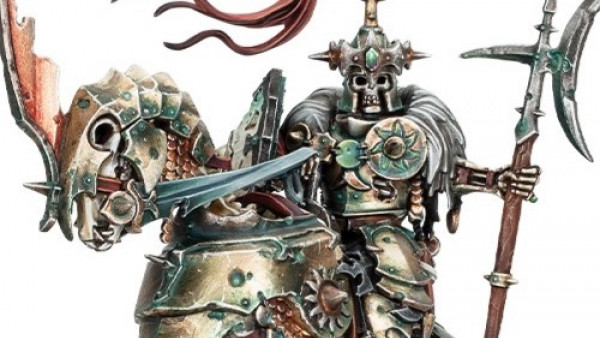

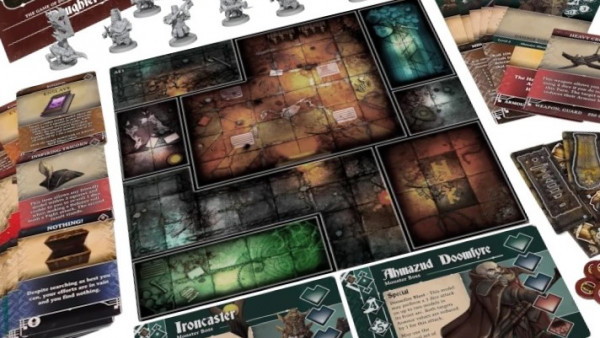

























Anouther great article , will following this
“Trauchpanzer” ?
I think it should be “Tauchpanzer” (literally ‘dive tank’) as that makes more sense.
History channel had a (Russian) series documenting the entire war from invasion to the final days.
“Soviet Storm : WW2 in the east”
https://www.youtube.com/watch?v=0A6UWkK2U4s
Thanks, @figure11 and @limburger . 🙂 Totally right about “tauchpanzer.” Sadly, that’s not the kind of typo that Corel or MS Word is going to catch on English (UK) settings. Trust me, I have enough trouble putting in all the extra “u”s in words like colour, armour, and don’t even get me started on “manoeuvre.” By the way, the website interface has all those words as “misspelled.” 😉 It’s not easy writing/researching in four languages at once. Give it a try sometime, in front of 40,000 subscribers. 😀 Soviet Storm isn’t too bad. It’s definitely one of the 30+ sources… Read more »
There is no extra ‘u’ in armour.
That’s how it is supposed to be written 😉
I do understand how difficult mixing languaes can be. I’ve only got 3 (or 4 if you consider American and proper English to be two languages … 😉 )
I haven’t seen the original Soviet version, but I suspected it was a bit more biased originally.
There is no “u” in “armor.”
Here in America, we do not cheat at Scrabble! 😀
(Okay, that’s Eddie Izzard’s joke, but it works. 😀 )
Then again, I’m the guy that tried adding an “r” to “tauchpanzer” 🙁
C’mon, you’re a Yank, no need for those extra U’s! You’re even a Southern Yank at that. Time for some y’alls, and all-y’all-alls in your writin’.
But seriuosly, good start to the article. Question though, and I’m not trolling here, I thought I’d read somewhere Stalin always believed Hitler would betray the pact in the end. He just got caught flat-footed as to when it would happen.
Thanks very much, @bwanajoe . I’lls be tryin’ to do better at m’ wra-atin’ so yall’s kin unnerstand what (pause to spit tobacco) what’s I’ms be sayin’. 😀 No worries about “trolling,” though. There’s always going to be an element of that and am well used to it (just waiting to be dazzled by the next opus submitted by some of the critics 😀 ). But honestly this isn’t trolling, it’s a solid question. Stalin and Hitler absolutely did not trust he each other and hated each other. Their trade and military exchange programs of the 1930s were strictly in… Read more »
A good introductory article @oriskany I am waiting for the next installments of the series. I have to agree with all subtle facts that you have pointed out here as for instance of the not so really mechanized Wehrmacht. I hope that future parts show Wehrmacht’s weak anti-tank capability. 88’s were not mobile, not many and appointed to the Luftwaffe and Germans used either their weak but very very light and thus mobile 3.7cm PAK 36 and a few 5cm PAK 38. Meeting T-34’s or KV tanks badly commanded or not proved to be a problem in the opening weeks… Read more »
Great points, @yavasa – and YES, we definitely get into this in Part 2 (Battles of Dubno-Brody, where the Germans first ran into the T-34 / KV-1). 😀 Battlegroup: Barbarossa does a great job on this, and not with a lot of “special rules,” and other top-down solutions. Guns have a penetration value, which decreases with range. A hit takes that penetration value and cross-references it against the target’s armor value, which yields an target number to be exceeded on an elegant 2d6 bell-curve. The values for German 3.7cm and much more rare 5.0cm guns as applied to a T-34… Read more »
Hmmm, good to see that Battlegroup reflects such nuances. 🙂 @oriskany
Good read @oriskany
For those with an interest in PC gaming for their grand strategy I can highly recommend ‘War in the East’, published by Slitherine games. Hex based with unit counters at the divisional level it has a whole lot going on under the hood. The Op Barbarossa campaign is some 250 turns in length. I’m a few turns in with my Panzer divisions making broad sweeping advances and my Infantry are struggling to keep pace with them. However, my supply lines grow ever longer and to quote a certain television show ‘winter is coming’.
Cool @benc I remember the game was grand 😉 There was also Gary’s Eastern Front and of course Steel Panthers but with the Gross Deutschland mod that was really really hard.
Thanks very much, @benc . 😀 I was about to ask if this is the “Gary Grigsby” War in the East game. Man, what a monster game. I think I bought it two-three years ago and still haven’t finished a complete game (well, except a tutorial). http://www.matrixgames.com/products/372/details/Gary.Grigsby's.War.in.the.East:.The.German-Soviet.War.1941-1945 Steel Panthers, of course, f***ing rules in all its versions and incarnations. 🙂 I think my favorite is still Steel Panthers III, 1939-99. But that’s like picking one member of the Swedish Bikini Team as “the most hot.” 😀 They’re all awesome. A friend of mine and I once did a year-long campaign… Read more »
Steel Panthers only Panzer Strike come up there with it for tactical WW2 on a computer. .. Steel Panthers did get a lot from it forefather, but Panzer Strikes USP was the turn set up, that where not IGUG but you locked in your orders and the the Computer executed it for both sides at once ….
Awesome. Never heard of Panzer Strike, I’ll have to check that out. 😀
Panzer Strike pre-dates Steel Panthers by about a generation so you might be in luck with some of the Abandoneware sites, and it was DOS based if I recall correctly -I had it on the C64. Published by SSI and designed by Gary Gigsby of Steel Panthers fame.
Old games are often the best games, @rasmus . I mean, even with hex-and-counter games, my favorites are from the 70s. 😀 I’ll have to see about Panzer Strike, although I’ve had on-and-off results when it comes to porting old games into DOS-shell emulators, etc.
North Africa was another detour forced upon Germany’s resources, and while the percentage committed to it on the ground was small in the overall scheme of things, the losses incurred in getting them there and supporting them were heavy because the British still had a strong naval presence in the Mediterranean (and aircraft as well). Hitler threw more at it too late which is why roughly quarter of a million Germans surrendered in Tunisia in 1943. Hitler had not intended to start a war until 1943 – that was what he told his senior military people when he became Chancellor.… Read more »
Thanks, @dorthonion – are we talking about the “division/month” metric mentioned in the interview video at around 7:30? Where 91 “division/months” were committed by the Germans in North Africa against 8932 total (just over 1% – and compared against the 86% represented by the 7811 committed in the East)? If so, I grant that this metric is a little myopic in that it doesn’t take into account naval, air, maritime, and logistical resources – only “boots on the ground” deployed division forces. Nevertheless, the data is presented simply to make the case of how important the Eastern Front was relation… Read more »
Great article, @oriskany . Once again you’ve dragged me away from my work with an “Oooh, what did Jim write!”
Question on the PB front: Why did you split the Soviet tank companies in the original PB into half-companies? Did they actually deploy them that way? I was under the impression that Soviet tank organization was similar in WWII to that of the Cold War: three troops of three, with a command tank, for a total of ten in a company.
Great question, @cpauls1 – always glad to see another PanzerBlitz fan (all respect to Battlegroup, of course). To answer your question directly – No. The Soviets did not typically deploy their tanks in half-companies. This early in the war, they had to stick almost exclusively to full companies – if for no other reason than only the company commander vehicles had radios with which to maintain contact with battalion. Simply put, I just don’t like unit-based games that don’t have a uniform unit of measure for the counters. In the original PanzerBlitz, as you know, Soviet tank units are considered… Read more »
As always terrific mate, looking forwards to it.
Thanks very much, sir. 🙂 I suppose wargaming on the Eastern Front can tie in to your topic on the “Too close to the bone” Sunday thread. Given the way both sides treated civilians, prisoners, etc.
http://www.beastsofwar.com/groups/painting/forum/topic/sanatised-wargaming-or-too-close-to-the-bone-thin-white-lines-or-190616-this-weekends-sunday-politics-show/
Just a couple of minor things… While AT capability might seem inadequate, it’s not always the case. It was only inadequate when dealing with heavier Soviet tanks such as the T34 and KV series but these were not the common tanks available and the 37mm could deal with the T26 or BT series with reasonable results. Also the 50mm Pak38 was being issued to divisions, albeit in small numbers and the short 75mm had a decent AP round too. Indeed StuGs were used frequently in an AT role due to this. Also in the Panzer Divisions the K18 100mm field… Read more »
Have no fear, @piers – in our Battlegroup games, even the 2.0 cm guns on the PzKpfw-IIs were popping holes in the BT-5s and 7s, “Knights in Plywood” as Katukov called them. @Yavasa was just asking / commenting on the specific cases against T-34s. Note there are not T-34s or KVs in the Pruzana scenario detailed in the article. The short 7.5cm L24 guns on our PzKpfw-IVDs and Es certainly did well against these lighter Sovet models do. We didn’t use very many StuGs because according to our records, the Germans didn’t have too many of these in the summer… Read more »
Totally agree @piers. The T-34 and KV-1s get too much press for their actual presence in this part of the war. On the other hand most wargamers reach for the biggest stick. You also lightly touch on a subject that is often glazed over by historians and wargame rules alike. Tank Melee! Or hand to hand fighting for tanks; if your gun is no good then ram them. A last ditch tactic often employed by the Russians. A variant of this in the Winter War was for the Russian tanks to park themselves in front of Finnish Bunkers blocking the… Read more »
Thanks, @jamesevans140 . Can’t argue with anything you say. 😀 All I would add, and I genuinely apologize in advance if this sounds just a touch defensive . . . Throughout this thread people (multiple, multiple people, please understand I’m not pointing any fingers at anyone specifically) keep mentioning the T-34 and KV-1, how few they were, all their flaws, and how little difference they made in the opening phases of Barbarossa, they get too much attention, etc. All very true, yes. Probably why they weren’t mentioned once in the article. 🙂 Probably why in Image 02 (showing all the… Read more »
No apologies needed or expected @oriskany.
At the end of the day I suppose that the icon of all icons for the Eastern Front is by far the T34 and the KV1 was the tiger before there were Tigers. So I would imagine that anyone who has read something about this war would be expecting these little beasties.
On a side note the Finns faced 6 preproduction KV1s, a prototype SMK but oddly no preproduction T34s that were available at the time.
SMK is definitely an interesting and rare beastie, probably a more functional option than the T-100 super-heavy. Still, would have been nice to “see” it in action at least once, if only from a historical standpoint.
I know . . . and stop me if you’ve heard this one. “Two T-100s and a landkruezer Ratte rumble into a bar . . .” 😀 😀
Time to get a pint lean back and start reading
excellent idea Rasmus 🙂
Oh great, @rasmus and @buggeroff . 🙂 Talk about “getting a point” not ten minutes after I sit down at work. The only “pint” I’m getting at the moment is a cup of coffee. 😀 On a Wednesday, no less. Bleh. 😀
Seriously, though, thanks!
@piers Of course you are right, the guns in question could eliminate the T26 or BT without a problem. I agree that what was not a big problem due to various reasons (KV’s T34’s) in 1941 or even 1942 became a big issue in 1943. Hence the famous instruction Richtlinen für Panzernahbekämpfung from 1942 on ways an infantryman can eliminate tanks in close combat. (The thing is a terrifying read) With 1064 50mm AT guns on the 22 of June 1941 it made like 1 tank per 1 mile of front? The 10cm K18 was so heavy and big that… Read more »
*Meant 1 gun per 1 mile 😉 my bad
@yavasa – indeed, 5.0 cm PaK 38s were pretty rare at this time to my knowledge. Something like 10% of the antitank guns assigned to the antitank battalion of the German infantry divisions. One thing I like to do when metrics and averages are mentioned (i.e., one antitank gun per mile of front) is “game it” in my head. Okay, so in 20mm, that’s one antitank gun piece for a table 16 METERS wide. Yeah, not stopping too much with that. 🙂 Of course that’s not how it works in real life. Plenty of 3.7cms are in there, and ATGs… Read more »
Yeah @oriskany the averages that I mentioned were only to show the really small number of these guns. Not to mention not all of them went for the Eastern Front at the beginning. What is quite interesting is the fact that Germans were really slow at producing AT guns that they really needed. Plus in 1942/1943/1944 they changed the proposed number of AT guns within a division which looks like chaos in the OKH. The tactics was quite good when it comes to AT fight and the Soviets at that time, in most cases, did not coordinate their tank+infantry cooperation.… Read more »
@Yavasa – in regards to your point on the slow production of German AT guns (and new models of tanks in general), I remember seeing some better-than-average Internet documentaries that posed the idea that early German successes in places like Poland, Belgium, and France “convinced” many elements of German command and industry that their tanks and ATGs were good enough “as is.” They won all these wars quite easily, clearly they had the right equipment. Of course these early victories were due as much as tactics and everything else. Once the enemy came up with better tactics (or just started… Read more »
@oriskany hear,hear!
😀
I’m gonna have to disagree here with regards the Tiger.
It was the Char B and the Matilda that made the Germans realise they needed a heavier tank.
The design brief went to Henschel and Porcshe in May 1941.
The Pak40 was also requested a long time before meeting T34s…
Okay, in the interest of friendly, high-level discussion (absolutely not trying to pick an argument or “win the Internet” here) … I gotta agree to respectfully disagree … partially … on this. 😀 I mean, sure, Rheinmetall gets the requirement specs for what would become the PaK 40 in 1939. And after 2½ years, no German AT battalions are equipped with them (that I can find). I mean, in June 1941 less than 10% of the battalions in German infantry divisions even have the 5.0cm PaK 38 (that’s one battery per division, and that’s if you include the antitank companies… Read more »
Back in 1940 it takes a while to develop, test and then mass produce a weapon. The first combat trial of a Pak40 was November 1941 if my memory is working correctly. So pretty good going from request to initial production really. The Tiger wasnt rushed, the Panther certainly was though. I dont think there is any malaise in German tank armament development to be honest. Upgunning of Panzer IIIs had begun and the Pak38 was entering mass production. Seems a logical progression with reasonable development time to me. Also the Germans had to make the decision to maintain tank… Read more »
Cool deal, @piers . 😀 “The arrival of the T34 and chums helped galvanise and speed up developments …” Chums, I like it! 😀 Yeah, this is pretty much all we’re saying. Certainly didn’t “start” the development programs cold turkey. “As for German intelligence it was always poor. They did have armour samples from Soviet tanks knocked out in Finland, these led to the request for the Pak40, but the T34 wasnt seen till the 1941 May Day parade, and really went unnoticed.” Yeah, that’s one thing that’s always struck me odd in the histories. Luftwaffe pilots were logging thousands… Read more »
I think the ‘shock’ isn’t that they had the T34 but that its armour and gun was such a departure from what had previously been assessed. Same with the KV series. Its a shock born from complacency. Surprise that the ‘Slavs’ could produce such a vehicle. This is why I think the overall shock is limited and quickly overcome. Im not entirely sure German air recce and tactical intel was all that good either. Certainly was poor in other operations too. When compared to Allied and even Soviet intel later in the war, it doesn’t stack up very well. They… Read more »
Good afternoon, @piers – I think the ‘shock’ isn’t that they had the T34 but that its armour and gun was such a departure from what had previously been assessed. Same with the KV series. Can’t argue with that – “Knights in Plywood” armor on the BT series and 45mm guns to the 76.2s, sloped armor on the T-34, and the “land battleship” 😀 that was the KV-1. It’s a shock born from complacency. Totally agree. 😀 Only five Corps got significant numbers of T34s – 4th & 6th received around half of all delivered, 3rd, 8th and 15th… Read more »
We tried hard with Barbarossa to reflect the right feel. It was a tricky one as we didn’t want it to be the same as either Blitzkrieg that followed or the later war books.
I think it works well, and it has a good feel yet still retaining some degree of balance, though we did have several other rules we ended up taking out to make things flow right.
You could easily simulate the poor Soviet optics by giving them all -1 to spot.
Perhaps a -1 for Soviet optics, or really just for any army (or player) that tends to operate with the tank (or specifically, the tank’s commander) buttoned. Israeli tank commanders almost always fought unbuttoned in 56, 67, and 73 … and have both the kill rations, and commander casualties, to prove it. Their studies estimated it “doubled the tank’s effectiveness” (a rather nebulous metric) but it’s got to be one of (one of) the factors in their success. Players might decide to have their tanks unbuttoned, giving their tanks a better chance to spot targets, but suffer a corresponding +1… Read more »
@oriskany One division 1000 kilometres away requires a lot more logistical effort than a division 100 kilometres away – if I recall correctly, something like 80-90% of the troops on the Allied side in western Europe were support formations rather than actual combat units. Thousands of gallons of fuel were burned delivering hundreds of gallons to the front line (Red Ball Express etc). Operation Market Garden was a trade off – the Allies had just enough fuel to go north for the Antwerp/Rhine area or south for Bavaria and beyond. Monty got the fuel… Back to Russia: one of the… Read more »
Great post – @dorthonion – “One division 1000 kilometres away requires a lot more logistical effort than a division 100 kilometres away.” Very true, which is a big part of how the Eastern Front basically killed the German war effort. By the time you get to places like Stalingrad, the distance from Germany to the front line is in excess of 2,000 kilometers, carried over terrible roads, rail lines that are the wrong gauge, and swarming with tens of thousands of partisans. But I also remember coming across statistics during last year’s Desert War article series, where I read that… Read more »
Add to that the ‘late’ start of the operation, which meant that they got to those roads during the worst kind of weather they could have imagined.
Totally, @limburger . If Barbarossa had started “on time” on May 15, 1941, we’re looking at Smolensk my mid-June, “Typhoon” and Vyazma by mid-August, and the Mozhaisk Line by the beginning of September. German spearheads would have had Moscow under artillery fire by the time those rasputitsa rains hit, so they might not have taken Moscow right away, but the time-slot that is historically occupied by Typhoon is instead a direct assault on Moscow (October-November), with the Soviets still unable to redeploy 30+ divisions out of Siberia. German supplies haven’t hit rock bottom yet, the men aren’t freezing to death… Read more »
A great start to Barbarossa @oriskany
So if this isn’t the biggest military operation what is?
Oh man, @zorg , I guess that depends on how you measure it. Overlord, for example, encompassed far more than the initial landings of 156,000 men. By Overlord fully developed and was “concluded” in August, there are almost 3 million men involved, plus the crews of the 6,000 ships involved (1 million men at least) and all the air power (another million on top of that). The Soviet counter-invasion out of the Soviet Union (purposefully kicked off on the three-year anniversary of Barbarossa, June 22, 1944) had, at its outset, about 2 million men committed by the Soviets. But this… Read more »
interesting so overlord is probably the largest combined as in all three forces being involved,
but they are all very close physically in numbers?
I don’t mean to be evasive, @zorg , but it really depends on how you measure it. Some definite contenders would be Overlord, Bagration, and the Vistula-Oder Offensive of January-March 1945.
Of course, the biggest one of all never happened, Operation Downfall, the ground invasion of Japan. 😀
would probably be the bloodiest as well @oriskany
Oh God, yes. Might not have racked more dead than the whole Eastern Front, but would heave easily doubled the American butcher’s bill for World War II. I think I read somewhere that the beaches were being code-named for American car manufacturers, so “Chevrolet Beach”, “Oldsmobile Beach,” “Studebaker Beach,” etc. The invasion was being named “X-Day” instead of “D-Day.” It’s been suggested that if this had gone down (both “Downfall” invasions, Kyushu in October of 1945 and Honshu / Tokyo Plain in April 1946) – American history would hardly remember beaches like Omaha and Utah, or that whole “D-Day” thing.… Read more »
? I don’t know I think even the kid’s would have been flung in to stop the marines would have been a million times worse than Berlin @oriskany
Every single man, woman, and child was being mobilized. 60-year old grandmothers were being issued bamboo spears to face Marines with Thompsons, .30cal machine guns, and flamethrowers. The Americans were even ready to use chemical weapons (I can’t remember the code-name of the plan, begins with a “G”), something even the Germans didn’t do in World War II.
But of course, that’s kind of a different topic. 😀
the bomb’s saved a blood bath for both sides.
Probably can’t argue with that. Although there’s always the hope that the Japanese might have surrendered when faced with actual invasion. Slender, I know, but possible. I mean, they surrendered when faced with the A-bomb, right? Once the true horror of full-scale ground war hit Kyushu, the Emperor may have overruled his cabinet / War Council and forced a surrender, much like he did in fact after Nagasaki. The second invasion on Honshu / the Tokyo Plain might not have been necessary. There’s also the question of the Soviets. They entered the war against Japan on August 9, the same… Read more »
@zorg :
If you only look at the number of casualties caused by both bombs on the day they were dropped then yes it might.
However there have been a lot of indirect casualties due to radiation affecting generations afterwards …
That’s certainly a valid point, @limburger . The highest numbers I’ve seen are about 150,000 immediate dead in Hiroshima, 80,000 in Nagasaki (I’ve seen as low as 80,000 Hiroshima, 40,000 Nagasaki). But as time progresses that number has to go up.
Still, given the tens of millions of expected Japanese dead if a full Operation Olympic + Operation Coronet = Operation Downfall had been unrolled to their full horrific scope in 1945-46?
I didn’t mean to make light of the casualties I was thinking of the overall deaths of the civilians + Japanese & US troops would have been much higher on both sides. @limburger
agreed. 😀
the mongol conquest
Does anyone have reliable numbers on that? Of course, if we’re using “land area covered” as a metric, I would have no argument. 😀
nice overview btw, who would have thought the ulus of Jochi would stand shoulder to shoulder with Kiev Rus mirasçıları against the Brothers of the Sword
I recall reading that the Russian railway system was a different gauge than the German one, so the Germans had to dig up the railway and lay new track for their trains. A very time consuming job.
Very true, @darthcheese – the Soviet rail gauge was significantly wider than other European rail lines, and tremendous effort had to be expended by German logistics to rip it all up and lay new track. Until this could be done, German rear area units were also using trains to bring supplies and troops to across Poland and Rumania, unload them, truck them to another rail station inside of the Soviet Union, RE-load them on another train, and carry them the rest of the way. Either way, a major drain on logistical and support resources.
And on top of that they’re also dealing with resistance groups destroying the railways too.
Even if they weren’t very effective it still meant the Germans had to use extra resources in order to protect their transports.
Absolutely, @limburger – Huge partisan problems for the Germans on the Eastern Front, almost from the very start. Many were simply soldiers that had been cut off in these massive battles of encirclement with which we’ll be dealing in Parts 02 and 03 (Bialostok-Minsk, Dubno, Uman, Smolensk, the Dvina River, Kiev, Vyazma, etc., etc., etc). Most were killed or captured as the pockets were liquidated, but the Germans never had enough infantry to really make these pickets air-tight. So thousands of Red Army soldiers would escape and either make it back to their own lines or remain behind as partisans.… Read more »
yep, Soviet Storm mentioned that these partisans were effectively an extra army for the Soviets to use.
Quite unlike the resistance in the west where allied command really could not force them to do anything.
Wars never have a nice simple final date.
That only ever happens in fiction …
Completely agree, @limburger . I don’t have the numbers in front of me, but the amount of troops and resources the Germans had to keep behind the lines to secure (oh wait, I mean FAIL to secure) their lines of transport, supply, communication, etc … I know it’s in the hundreds of thousands. I’ll have to poke around on that.
Suffice it to say that the presence of even half of these German troops on the front lines might have made a big difference. 😀
@oriskany don’t forget the thousands of troops & resources that the Germans had to take from the frontlines to be used for AA unit’s for all the bombing raids especially later in the war.
That’s one thing I’ll always concede re: the different “importance” of different fronts. The actual effect of the Anglo-American strategic bombing efforts against German industry will always be highly suspect, one thing that I don’t feel can be debated is the draw of the Luftwaffe fighter squadrons and AA defenses away from the fronts (especially Eastern) and back to defend German cities and industry. I’d hardly call it a true “second front,” but one can’t deny the drain of German fighter and air defense assets off the Eastern Front due to American and British bombing, which in turn must have… Read more »
thinking of the 88s moved from the front line not tank? killing for one thing.
As always with German armies… logistics are an after thought. Poor operational logistics did as much to delay the Germans as the Red Army at times. Also the bigger guns might have been rare but so we’re the T34s and KV tanks. There were around 960 T34 and 500 KV tanks available in June 1941. Plus the issues with the transmission caused plenty of problems. Around half of all Soviet tank losses in the summer of 41 were mechanical write offs. 4th and 6th Mechanised Corps lost virtually all their T34 and KV tanks during movement to the area of… Read more »
@piers – As usual, I gotta agree with most of this. 🙂 I’ve probably done more reading from the Soviet side than the German side, but even so, the “tank terror” of the T-34 / KV-1 seems to be pretty temporary, especially given the incompetence of early-war Soviet tank crews. There’s always the famous photo of Germans inspecting three abandoned T-34s which their crews drove straight into a bog, still in perfect formation, sunk up to their running boards. These early T-34s were loaded down with a whole portfolio of flaws, everything from warped glass in the vision blocks, bad… Read more »
Looking forward to seeing the next installment.
Personal per project of mine is the history/background of the 33rd Grenadier Division “Charlemagne”, who at this stage were still known as the Légion des volontaires français contre le bolchévisme (LVF).
And boy, do things get interesting real quick.
Hang onto your butts, people… 🙂
Hey, @wittmann007 – man, great minds think alike. Yes, we definitely highlight one of the most famous early battles of the LVF in October, 1941 – the Battle of Borodino Field. This will be in Part 04, where we talk about Operation Typhoon (see 16:40 in the interview video). The LVF was attached to the Wehrmacht 7th Infantry at the time, and get into a ferocious battle against 32nd Red Banner Rifle Division (a Soviet division that earned it’s “Red Banner” status fighting against the Japanese in Mongolia, 1938 and 39). This was the first big crack against what was… Read more »
@oriskany, we are a dying breed! 😀
Really looking forward to this. Watching intently!
Thanks, @witmann007 ! Again, Borodino is in Part 04, so it’s a little ways off, but it’s coming! 😀
strange how some things can repeat.
@oriskany did you ever play LNL games?
Awesome sauce btw!
Thanks very much, @ab5000 . Yes, I have tried Lock n Load, Band of Heroes (paratroopers in Normandy). Got the ever-livin’ @@@@ kicked out of me by @naznarok , who was teaching me the game. We also used to play some of the games in Tide of Iron series. Also, another friend and I played much more of the “Valour and Victory” series, which used to be free-to-play (download and print) on the web. I think it also runs on Vassal. On our tables, we’ve run Western Front, a lot of Eastern Front, and a complete campaign of US Marines… Read more »
Jim you’re a legend, great series, looking forward to the rest 🙂
Thanks very much, Mick. 😀 Definitely hope you like the rest.
Meanwhile, we’ve got the more detailed battle reports from our actual tables rolling out here:
http://www.beastsofwar.com/groups/historical-games/forum/topic/barbarossa-soviet-union-invaded-75-years-ago-today-battle-reports/
I promise these gaming tables get better! 😀 The first ones are always a little bland.
So we are doing what the Historians call the “Road to Moscow” in just 5 articles. This will certainly test you great skill in condensing things and I look forward to reading the results. As this is just the cover page I will keep my comments to the global rather than drilling down at this stage. Many German soldiers when debriefed after the war by the Allies claim Barbarossa was a pre-emptive strike not an invasion. Surprisingly there is a small amount of truth to this. Two ego driven tyrants cannot share the same cotenant. Both Hitler and Stalin knew… Read more »
Thanks, @jamesevans140 – So we are doing what the Historians call the “Road to Moscow” in just 5 articles. Yeah, not easy. The original campaign journal I wrote for this in PanzerBlitz was 206 pages (125,000 words) not including maps and situation cards. Hey, at least the research was done ahead of time. Many German soldiers when debriefed after the war by the Allies claim Barbarossa was a pre-emptive strike not an invasion. Indeed, the “Paneuropean Crusade against Bolshevism.” As posted above: Stalin and Hitler absolutely did not trust he each other and hated each other. Their trade and military… Read more »
Thanks @oriskany.
I truly understand the Hitler and Stalin prewar relationship as it is completely natural if not counter logical.
In our far North we are infested by saltwater crocodiles. The males establish large territories and will kill a smaller male entering said territory. Yet just before the monsoons pools and rivers start to dry up. When this happens you will find males laying side by side covering each other with near liquid mud. Then when the rains come they will happily kill each other. It would appear that survival is the strongest instinct.
Almost reminds me of Mobster families. 😀